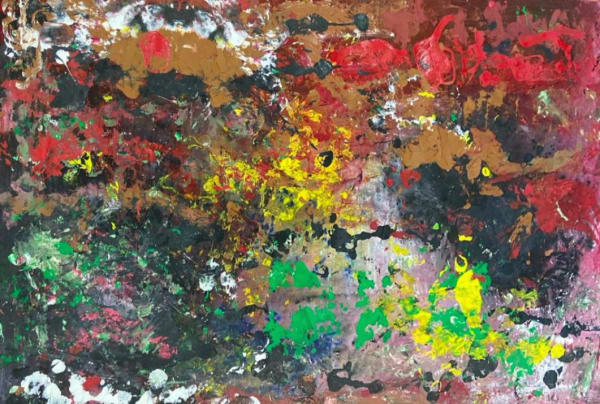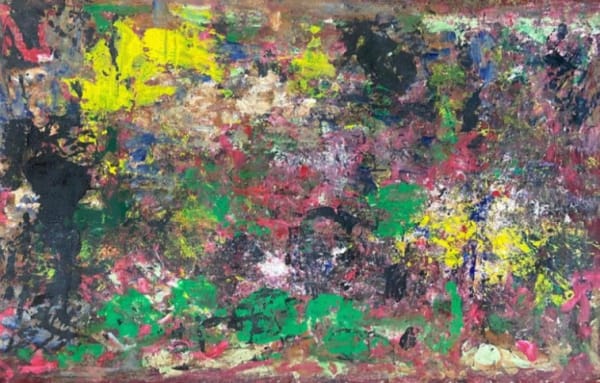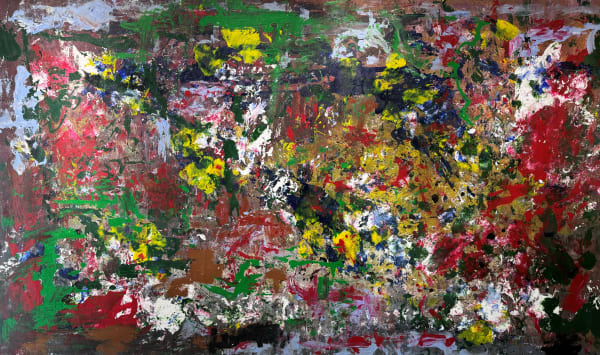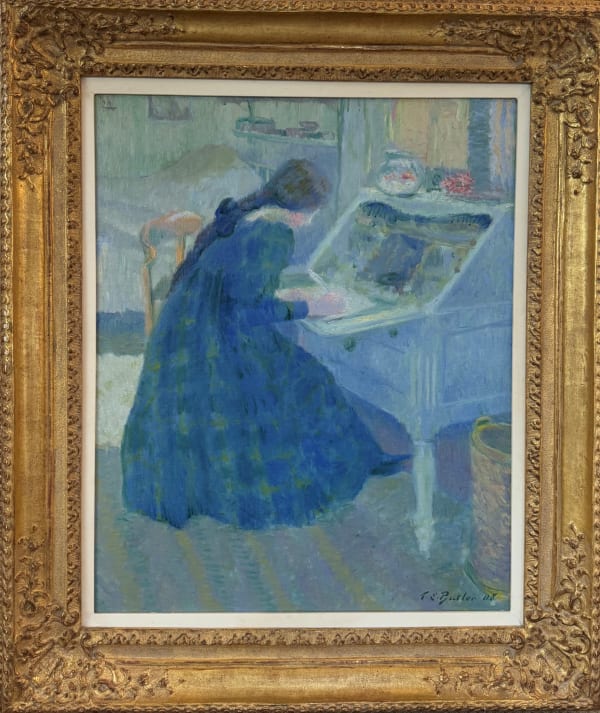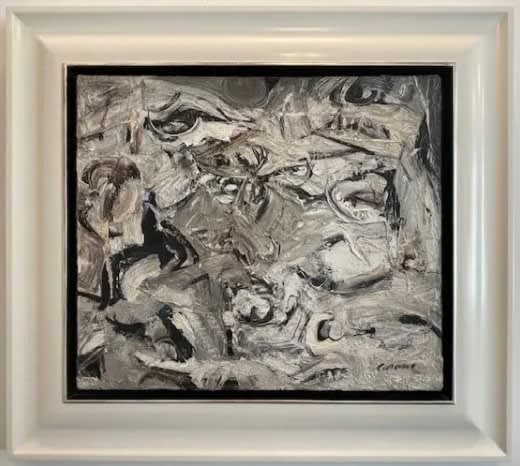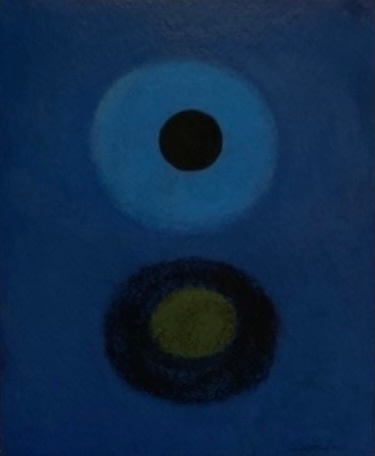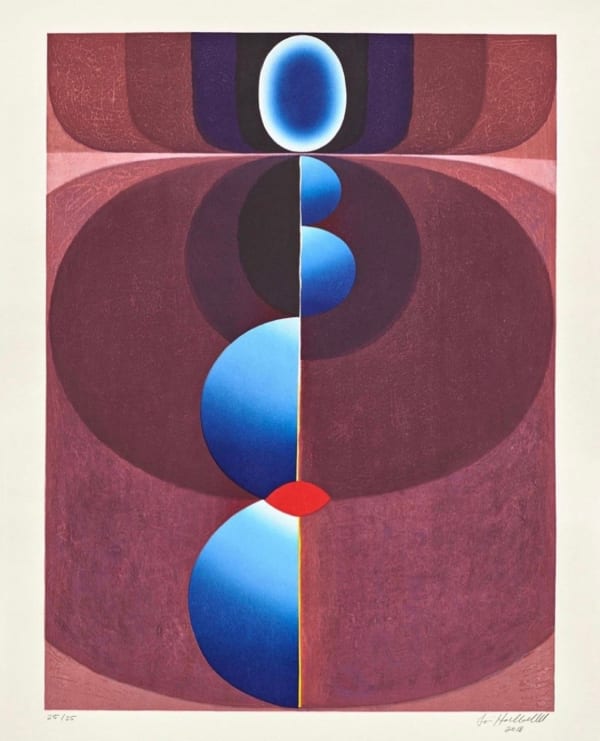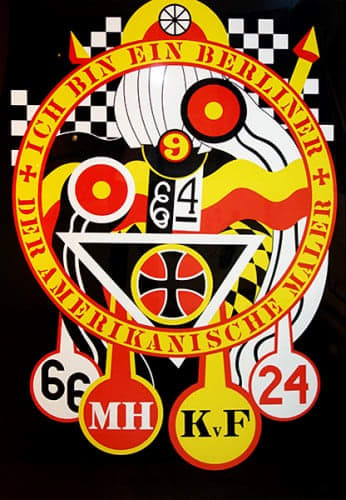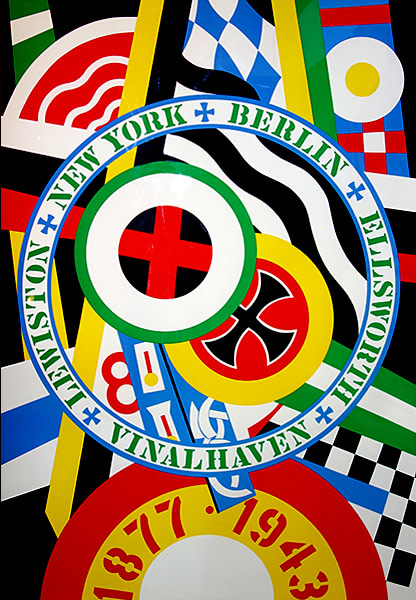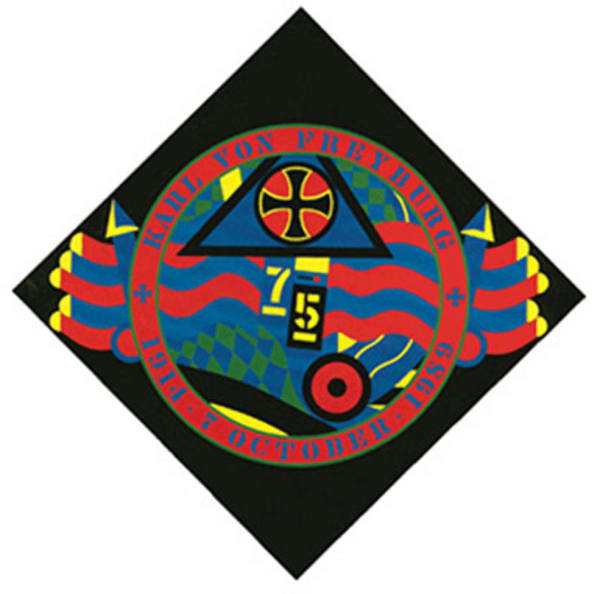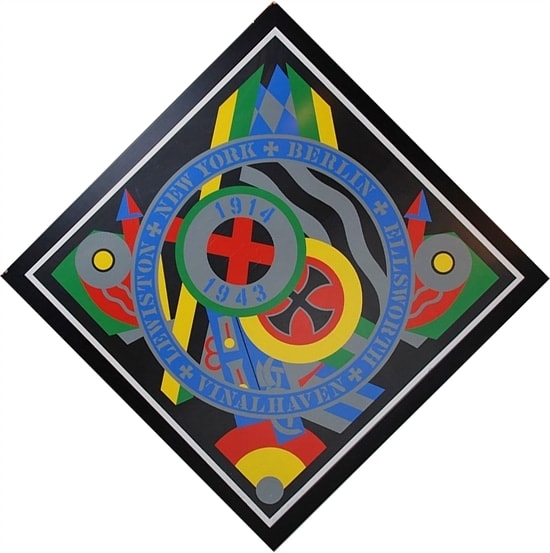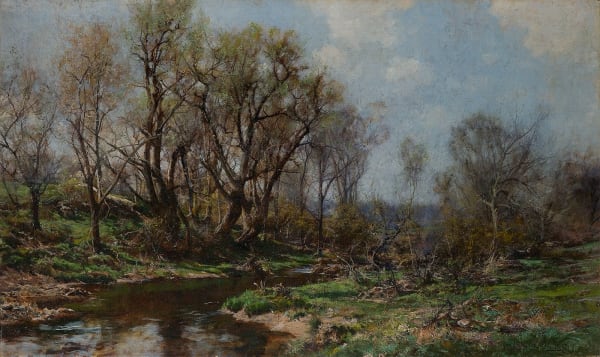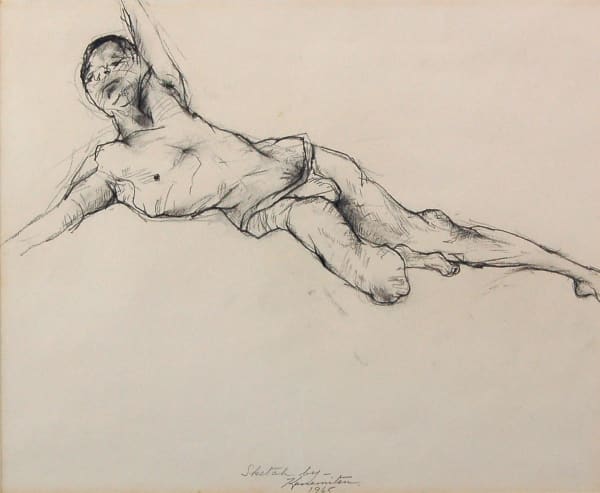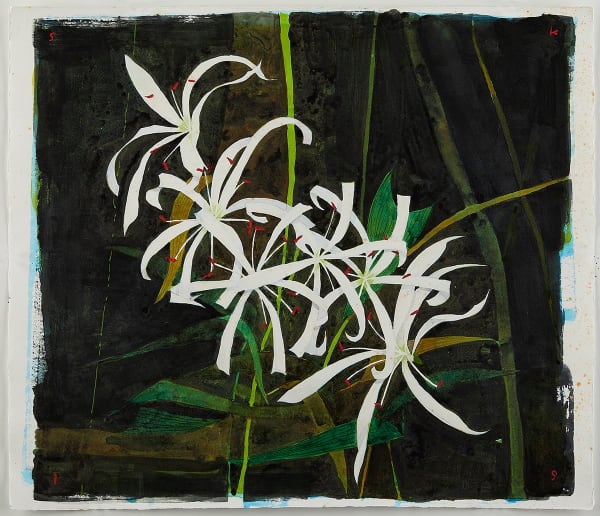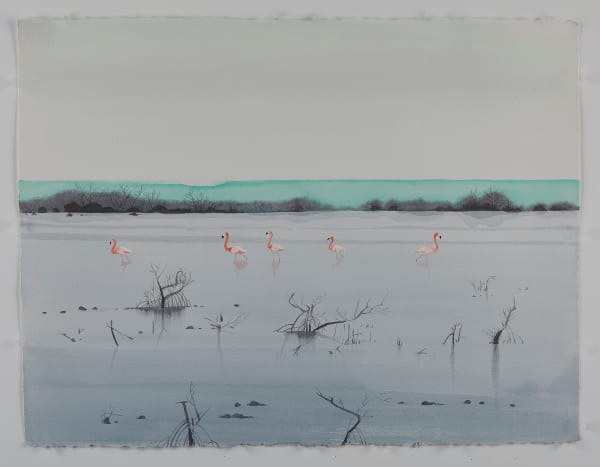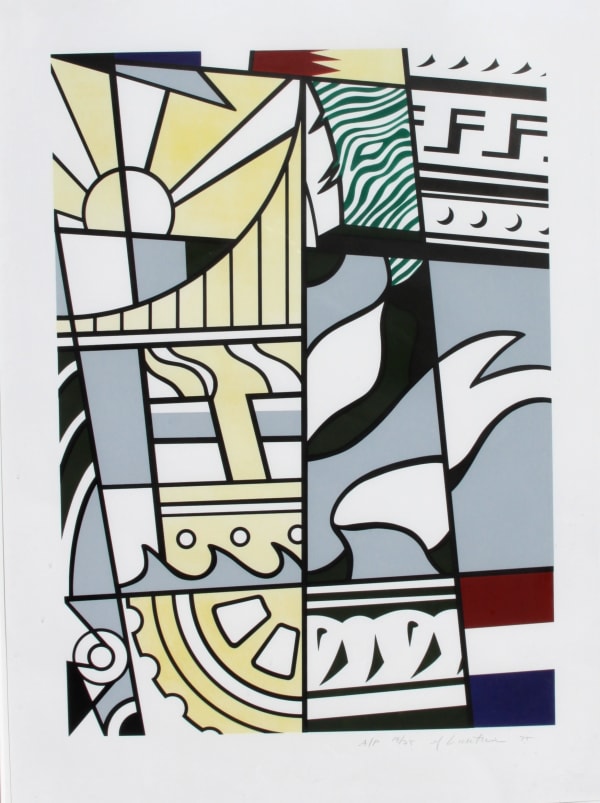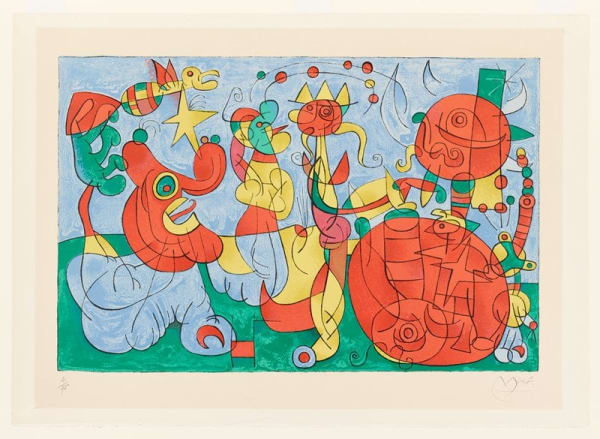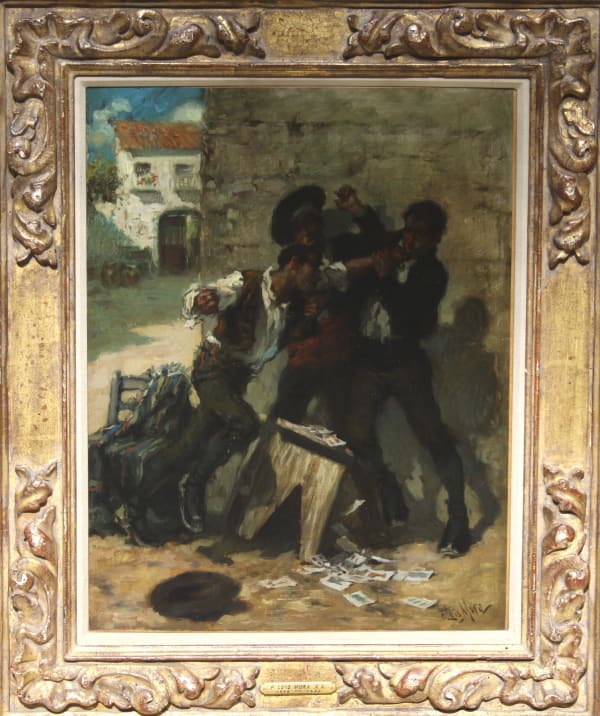-
 Derrick Adams, Boy on Swan Float, 2020
Derrick Adams, Boy on Swan Float, 2020 -
 Derrick Adams, Party Guest 1 (We Came to Party and Plan Series), 2020
Derrick Adams, Party Guest 1 (We Came to Party and Plan Series), 2020 -
 Milton Avery, Man and Sea, 1948
Milton Avery, Man and Sea, 1948 -
 Jean-Michel Basquiat, Superhero Portfolio of Four “A Panel of Experts” , 2022
Jean-Michel Basquiat, Superhero Portfolio of Four “A Panel of Experts” , 2022 -
 Thomas Hart Benton, Animalistic Fantasy, 1925-26
Thomas Hart Benton, Animalistic Fantasy, 1925-26 -
 Thomas Hart Benton, Minstrel Show, 1934
Thomas Hart Benton, Minstrel Show, 1934 -
 Thomas Hart Benton, Jessie on the Couch, 1948
Thomas Hart Benton, Jessie on the Couch, 1948 -
 Mel Bochner, All or Nothing, 2023
Mel Bochner, All or Nothing, 2023 -
 Fernando Botero, Mujer a caballo, 1999
Fernando Botero, Mujer a caballo, 1999 -
 Fernando Botero
Fernando Botero -
 Fernando Botero, Il Violinista, 2010
Fernando Botero, Il Violinista, 2010 -
 Fernando Botero, Woman lying on belly, 2007
Fernando Botero, Woman lying on belly, 2007 -
 Fernando Botero, Man on Horseback , 1985
Fernando Botero, Man on Horseback , 1985 -
 Winston Branch, Summer Nights, 1996
Winston Branch, Summer Nights, 1996 -
 Winston Branch, Moonlight in Lake Merritt, 1995
Winston Branch, Moonlight in Lake Merritt, 1995 -
 Winston Branch, Light Across the Bay, 2001
Winston Branch, Light Across the Bay, 2001 -
 Andrew Brischler, Sellout!, 2016
Andrew Brischler, Sellout!, 2016 -
 V. Brooks, Of Another Time, 2003
V. Brooks, Of Another Time, 2003 -
 Orville Bulman, Pelerin
Orville Bulman, Pelerin -
 Orville Bulman, Les Gardiens
Orville Bulman, Les Gardiens -
 Orville Bulman, Le Jazz Horn
Orville Bulman, Le Jazz Horn -
 Orville Bulman, Le Jazz Horn Bleue
Orville Bulman, Le Jazz Horn Bleue -
 Orville Bulman, Laureat
Orville Bulman, Laureat -
 Orville Bulman, La Artiste, 1963
Orville Bulman, La Artiste, 1963 -
 Orville Bulman, The Governor's Mansion, 1964
Orville Bulman, The Governor's Mansion, 1964 -
 Orville Bulman, Le Barque Loustic
Orville Bulman, Le Barque Loustic -
 Charles Ephraim Burchfield, Late Winter Dawn, 1956-65
Charles Ephraim Burchfield, Late Winter Dawn, 1956-65 -
 Theodore Earl Butler, Writing a Letter, 1908
Theodore Earl Butler, Writing a Letter, 1908 -
 Alexander Calder, Planetary Motion, 1964
Alexander Calder, Planetary Motion, 1964 -
 Nicolas Carone, No. I 1954, 1954
Nicolas Carone, No. I 1954, 1954 -
 Nicolas Carone, Untitled 2003
Nicolas Carone, Untitled 2003 -
 Chuck Close, Lucas Paper/Pulp, 2006
Chuck Close, Lucas Paper/Pulp, 2006 -
 Chuck Close, Self Portrait, 2007
Chuck Close, Self Portrait, 2007 -
 Lu Cong, The Witness of My Dreams, 2022
Lu Cong, The Witness of My Dreams, 2022 -
 Dragana Connaughton, Art of Flight
Dragana Connaughton, Art of Flight -
 Eric Forstmann, Gone Shirt, 2023
Eric Forstmann, Gone Shirt, 2023 -
 Sam Francis, Untitled, 1970
Sam Francis, Untitled, 1970 -
 Adolph Gottlieb, Untitled, 1967
Adolph Gottlieb, Untitled, 1967 -
 George Grosz, Female Nude, 1939
George Grosz, Female Nude, 1939 -
 George Grosz, Female Nude
George Grosz, Female Nude -
 Mark Grotjahn, Untitled (Capri 48.27), 2016
Mark Grotjahn, Untitled (Capri 48.27), 2016 -
 Keith Haring, Untitled, 1983
Keith Haring, Untitled, 1983 -
 Loie Hollowell, Standing in Shadow, 2018
Loie Hollowell, Standing in Shadow, 2018 -
 Robert Indiana, The Hartley Elegies: The Berlin Series, KVF III, 1990
Robert Indiana, The Hartley Elegies: The Berlin Series, KVF III, 1990 -
 Robert Indiana, The Hartley Elegies: The Berlin Series, KVF IV, 1990
Robert Indiana, The Hartley Elegies: The Berlin Series, KVF IV, 1990 -
 Robert Indiana, The Hartley Elegies: The Berlin Series, KVF VI, 1990
Robert Indiana, The Hartley Elegies: The Berlin Series, KVF VI, 1990 -
 Robert Indiana, The Hartley Elegies: The Berlin Series, KVF X, 1990
Robert Indiana, The Hartley Elegies: The Berlin Series, KVF X, 1990 -
 Hugh Bolton Jones, Spring Landscape, c. 1880s
Hugh Bolton Jones, Spring Landscape, c. 1880s -
 Wolf Kahn, Foreground Pond, 1997
Wolf Kahn, Foreground Pond, 1997 -
 Kaloki Nyamai, Untitled, c. 2020
Kaloki Nyamai, Untitled, c. 2020 -
 Kaloki Nyamai, Untitled, 2020
Kaloki Nyamai, Untitled, 2020 -
 Matsumi Kanemitso, Untitled (Sketch of a Boy), 1965
Matsumi Kanemitso, Untitled (Sketch of a Boy), 1965 -
 Matsumi Kanemitso, Untitled (Sketch of man), 1965
Matsumi Kanemitso, Untitled (Sketch of man), 1965 -
 Matsumi Kanemitso, Untitled (Sketch of man squatting), 1965
Matsumi Kanemitso, Untitled (Sketch of man squatting), 1965 -
 Deborah Kass, OY/YO, 1992
Deborah Kass, OY/YO, 1992 -
 Alex Katz, Red Coat, 1983
Alex Katz, Red Coat, 1983 -
 Alex Katz, Sunrise 1, 2022
Alex Katz, Sunrise 1, 2022 -
 Alex Katz, Purple Hat (Ada), 2017
Alex Katz, Purple Hat (Ada), 2017 -
 Kaws, Woodstock, 2014
Kaws, Woodstock, 2014 -
 Kaws, Tension , 2019
Kaws, Tension , 2019 -
 Scott Kelley, Spoonbill (facing front), 2023
Scott Kelley, Spoonbill (facing front), 2023 -
 Scott Kelley, Black Flamingo at Sunset, 2024
Scott Kelley, Black Flamingo at Sunset, 2024 -
 Scott Kelley, Swamp Lily, Big Cypress, 2019
Scott Kelley, Swamp Lily, Big Cypress, 2019 -
 Scott Kelley, Peter, Inagua, Bahamas, 2019
Scott Kelley, Peter, Inagua, Bahamas, 2019 -
 Scott Kelley, Lake Rosa, Inagua, 2020
Scott Kelley, Lake Rosa, Inagua, 2020 -
 Scott Kelley, Pelican- Biscayne Bay, 2020
Scott Kelley, Pelican- Biscayne Bay, 2020 -
 Scott Kelley, Spoonbill, 2023
Scott Kelley, Spoonbill, 2023 -
 Scott Kelley, Marsh Rabbit in an Eames Chaise, Homosassa, 2023
Scott Kelley, Marsh Rabbit in an Eames Chaise, Homosassa, 2023 -
 Scott Kelley, Choctawhatchee, 2023
Scott Kelley, Choctawhatchee, 2023 -
 Scott Kelley, Oology, 2023
Scott Kelley, Oology, 2023 -
 Elaine de Kooning, Basketball #40, 1977
Elaine de Kooning, Basketball #40, 1977 -
 Roy Lichtenstein, Bicentennial Poster (American: The Third Century), 1975
Roy Lichtenstein, Bicentennial Poster (American: The Third Century), 1975 -
 Roy Lichtenstein, Modern Print, 1971
Roy Lichtenstein, Modern Print, 1971 -
 Beatriz Milhazes, Dovetail , 2019
Beatriz Milhazes, Dovetail , 2019 -
 Beatriz Milhazes, Purple Dalia , 2015
Beatriz Milhazes, Purple Dalia , 2015 -
 Beatriz Milhazes, Mother’s Day , 2016
Beatriz Milhazes, Mother’s Day , 2016 -
 Joan Miró, Le Matador, 1969
Joan Miró, Le Matador, 1969 -
 Joan Miró, Les Grandes Manoeuvres, 1973
Joan Miró, Les Grandes Manoeuvres, 1973 -
 Joan Miró, Chez Le Roi de Pologne : Ubu Roi, Planche III, 1954
Joan Miró, Chez Le Roi de Pologne : Ubu Roi, Planche III, 1954 -
 F. Luis Mora, Card Sharks Tangle
F. Luis Mora, Card Sharks Tangle
Page
1
of 2













